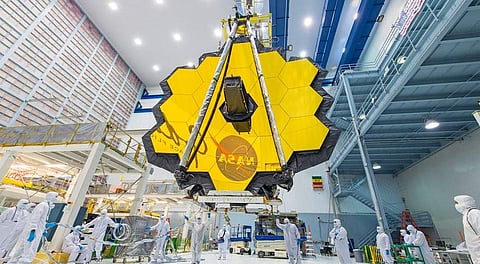

Engineers have finally assembled NASA's James Webb Space Telescope, the successor to the Hubble observatory.
Once in space, the telescope will explore the cosmos, planets and moons within our solar system as well as the most ancient and distant galaxies using infrared light, NASA said on Wednesday.
NASA's most powerful and complex space telescope has now been mechanically connected. The next step will be to electrically connect the two halves and test the electrical connections.
"The assembly of the telescope and its scientific instruments, sun shield and the spacecraft into one observatory represents an incredible achievement by the entire Webb team," said Bill Ochs, Webb Project Manager for the NASA Goddard Space Flight Center in Greenbelt, Maryland.
"This milestone symbolizes the efforts of thousands of dedicated individuals for over more than 20 years across NASA, the European Space Agency, the Canadian Space Agency, Northrop Grumman, and our industrial and academic partners," Ochs said.
Next up for Webb testing, engineers will deploy the intricate five-layer sun shield, designed to keep Webb's mirrors and scientific instruments cool by blocking infrared light from the Earth, Moon and Sun.
The ability of the sun shield to deploy to its correct shape is critical for the success of the mission.
The fully assembled observatory will then go through additional environmental and deployment testing to ensure mission success. The spacecraft is scheduled to be launched in 2021.
